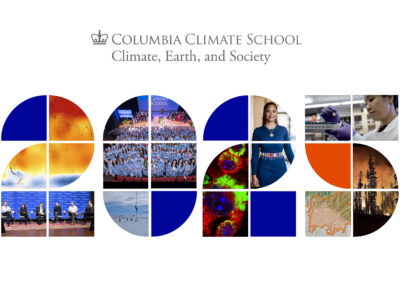In a new report, an international group of researchers warns that top-level policymakers have been receiving economic assessments of future climate-change impacts that largely omit some of the biggest physical risks. The researchers point to major potential problems that have been documented by scientists, but which they say are routinely excluded or downplayed by economists. The report was produced by Columbia University’s Earth Institute, Germany’s Potsdam Institute for Climate Impact Research, and the United Kingdom’s Grantham Research Institute on Climate Change and the Environment.
“Economic assessments of the potential future risks of climate change have been omitting or grossly underestimating many of the most serious consequences for lives and livelihoods because these risks are difficult to quantify precisely and lie outside of human experience,” says the report. “Scientists are growing in confidence about the evidence for the largest potential impacts of climate change and the rising probability that major thresholds in the Earth’s climate system will be breached as global mean surface temperature rises.”
Impacts highlighted in the report include: destabilization of ice sheets and glaciers, and consequent sea level rise; stronger tropical cyclones; the combined effects of extreme heat and humidity; more frequent and intense floods and droughts; disruptions to oceanic and atmospheric circulation that could bring cascading effects; and the destruction of biodiversity and collapse of ecosystems.

Some of these impacts involve thresholds in the climate system beyond which major impacts might accelerate, or become irreversible, says the report. The crossing of one threshold might cause one or more other thresholds to be exceeded as well, the report warns. It says that some resulting impacts could exceed the capacity of human populations to adapt, for instance in heavily populated parts of south Asia that could become basically uninhabitable due to extreme heat and humidity.
As an example of cascading effects, the report notes that Arctic permafrost currently holds twice as much carbon dioxide as there is in the atmosphere. Continued melting of the permafrost caused by rising temperatures could release much of this carbon to the air, giving the greenhouse effect a further catastrophic boost. This would result in accelerated wasting of polar ice, with resulting acceleration of sea-level rise and inundation of coastal areas. “Economic assessments fail to take account of the potential for large concurrent impacts across the world that would cause mass migration, displacement and conflict, with huge loss of life,” says the report.
The authors also are critical of economic assessments that are expressed solely in terms of effects on output, such as gross domestic product. This does not “provide a clear indication of the potential risks to lives and livelihoods,” they say.
The report acknowledges some recent progress by researchers on the economic risks of climate change: “Some advances are being made in improving economic assessments, [but] much more progress is required if assessments are to offer reliable guidance for political and business leaders on the biggest risks,” it says. “The lack of firm quantifications is not a reason to ignore these risks. [W]hen the missing risks are taken into account, the case for strong and urgent action to reduce greenhouse gas emissions becomes even more compelling.”
The Earth Institute authors of the report are land-use expert Ruth deFries; institute director Alex Halliday; economist Geoffrey Heal; food-security researcher Michael Puma; climate scientist Alexander Ruane; and glaciologist Marco Tedesco.



